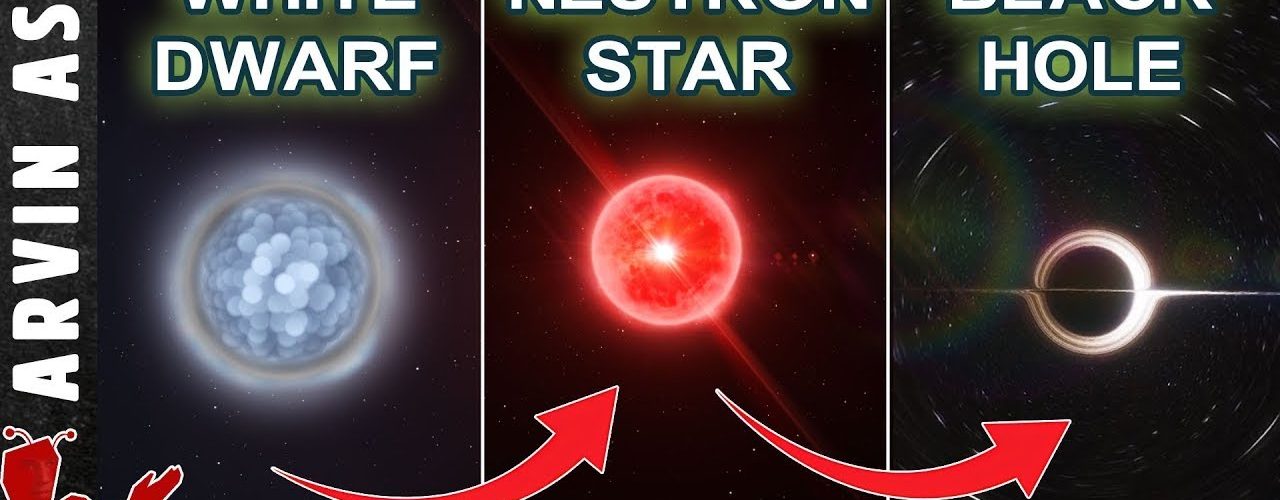The universe is full of opposing forces balanced in a celestial tug-of-war, until they sometimes aren’t. In stars, the two opposing forces are gravity which tries to collapse the star inward, and outward pressure due to the energy of fusion. This tug of war can remain in relative balance for billions of years.
But what happens when large stars run out of fuel and gravity overwhelms that outward pressure? This can cause a cataclysmic collapse, resulting in a colossal explosion called a supernova. And what remains is sometimes a neutron star or a black hole. But how does a sudden collapse result in such a powerful explosion, and why does a neutron star or black hole form?
The process of a supernova explosion:
A star creates outward pressure against gravity by the energy from fusion. It fuses increasingly higher mass elements, starting with fusing hydrogen to helium then progressing up through the periodic table until a core of iron and nickel is produced. Fusion stops there because the fusion process creating iron consumes more energy than it produces.
When this happens, no energy gets produced, and so the outward thermal pressure decreases, allowing gravity to collapse the star. The core contracts. Sometime electron degeneracy pressure keeps the core from collapsing further.
What is electron degeneracy pressure? It has to do with the Pauli exclusion principle. There are simply no other free quantum states for electrons to occupy, so there is no physical possibility of compressing more.
Once a star is in this degenerate state, gravity cannot compress it any more. So the core of the star survives. This core of a star where the electron degeneracy pressure keeps it from collapsing further, is called a white dwarf. This is what will happen to our sun after billions of years.
But, there is a limit to the amount of mass that such a white dwarf can have. Indian-American physicist, Subrahmanyan Chandrasekhar discovered this limit to be about 1.4 times the mass of the Sun. This is known as the “Chandrasekhar limit.” So if the mass of the collapsed star exceeds of 1.4 times the mass of the sun, even this electron degeneracy pressure is not enough to keep the star from further collapse. The star will keep collapsing. And at these conditions, electrons combine with protons in a process called electron capture, to form neutrons. Electrons are captured by the nucleus, creating a smaller ball of pretty much nothing but neutrons, and no more atoms remain. The star becomes like a giant atomic nucleus. The Pauli exclusion principle which which causes electron degeneracy in White dwarfs, also applies to neutrons in neutron stars.
#neutronstar
#blackhole
The core of the star which is like one giant nucleus now, forms a kind of incompressible wall. And since the in falling outer part of the star now has nowhere to go, the collapse of its outer mass now bounces off this neutron core.
The energy of this sudden rebound causes a shock wave which disrupts the overlying stellar matter, and pushes it to escape velocity. And this is what results in a supernova explosion.
For a brief time, a supernova can be as bright as the entire galaxy. What’s leftover from this process is a neutron star, and it can remain a neutron star for billions of years. But if electron degeneracy can be overcome by gravity, why can’t neutron degeneracy also be overcome by gravity? It can.
Just like the Chandrasekhar limit which when exceeded results in a Neutron star, there is something called the Tolman–Oppenheimer–Volkoff limit (or TOV limit), which when exceeded results in a Black hole. The limit as about 1.5 to 3.0 solar masses. So if the remnant neutron star is 1.5 to 3 times the mass of our sun, gravity can overcome even the neutron degeneracy pressure, and collapse it further to something even smaller than a neutron star, theoretically, infinitesimally small, a black hole.
When a black hole forms, nothing can escape from it, not even light. So unless there is in falling matter into the black hole, which gets compressed and heated to produce high energy radiation like x-rays or gamma rays, which would be visible on our telescopes, we would not see anything. That’s why it’s called a black hole.







